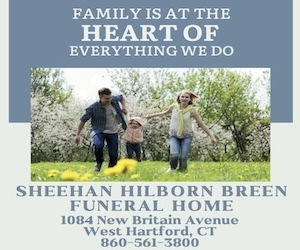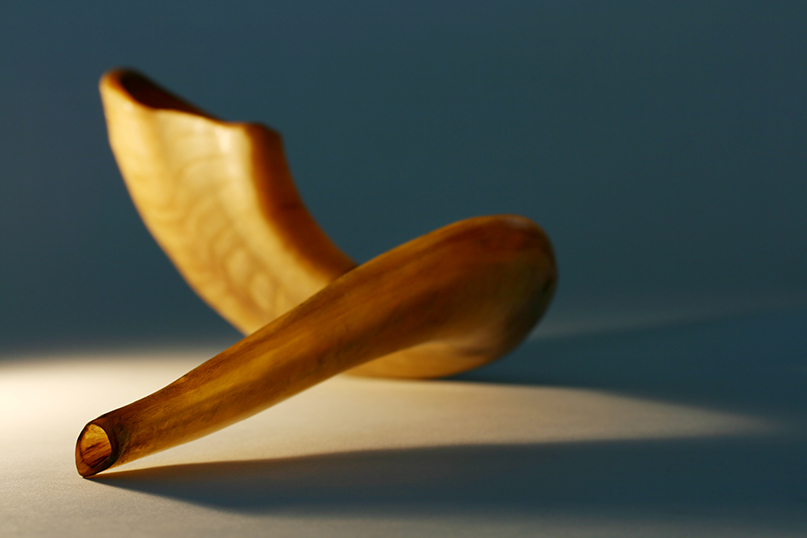
Forbidden from using electronic media, CT Orthodox synagogues find alternate ways to conduct High Holy Day services
By Faygie Holt
(JNS) As fall arrives and the coronavirus pandemic continues to spread throughout the United States, prayers are very much needed, say rabbis across the Jewish spectrum, even if individuals and families cannot make it to synagogue to herald in the new year, 5781.
“This is a time when the true focus of prayer and the need for prayer is more intense than ever,” said Rabbi Moshe Hauer, executive vice president of the Orthodox Union. “The prayers of the High Holidays always carry with it a certain level of urgency, it is just underscored and that much stronger this year.”
As more liberal Jews groups intend to utilize online platforms to stream services and shofar blowing, Orthodox congregations, which do not use electronic media on Shabbat or major holidays, are scrambling to ensure that as many people who want to come to holiday services can do so while they continue to meet local and state health guidelines.
For many congregations, that means splitting the members into different prayer groups, sometimes in different locations, and lining up additional people to lead the various services. In many cases, to make these accommodations work, parts of the service may look a bit different.
“Following the guidance of our medical committee and the best practices put out by the Orthodox Union and Rabbinical Council of America, the Young Israel of West Hartford will be conducting all of its in-person minyanim and programs outside over the High Holiday/Yamim Noraim season,” rRabbi Tuvia Brander, spiritual leader of Young Israel of West Hartford, told the Ledger. “We will be meeting under a massive, open-air tent/canopy. In order to accommodate the high demand and our booming membership, we will be running waves of services (including some off-site) including multiple Rosh Hashanah day services (beginning at 6:30 a.m. and going until mid-afternoon) and multiple Yom Kippur day and afternoon/Mincha-Neilah services.”
With the creation of additional prayer services comes an increased need for qualified people to lead prayers in those services. To that end, the OU is offering a “Ba’alei Tefillah Boot Camp” to do just that; a Ba’alei Tefillah is similar to the role of cantor. More than 50 synagogues representing congregations throughout the United States, as well as Canada and South Africa, are participating.
Traditionally, Rosh Hashanah services run upwards of five hours at Modern Orthodox congregations and longer at haredi synagogues. This creates concerns about how long people will be congregating in one space, particularly if indoors. It also creates logistical concerns for synagogues that because of COVID need to have back-to-back prayers services to accommodate their congregants.
To that end, some synagogues are undertaking measures to shorten the prayer time.
“There has been a tremendous amount of rabbinic scholarship shared relating to the lengths of the services; and the conclusion of virtually all Modern Orthodox sages encourages the skipping of all ancillary prayers so as to limit the amount of time that any of the groups are congregated,” says Rabbi Yitzchok Adler, spiritual leader of Beth David Synagogue in West Hartford. “Beth David expects its Rosh Hashanah and Yom Kippur morning services to be close to two hours, less than half what they usually are. Since July, Beth David has been convening outdoors for Shabbat morning services; and we are able to meet all of the halachic requirements in just over one hour.”
Other synagogues are asking members to recite certain prayers at home, trimming back on in-person singing of prayers, speeches or simply trying to go a bit faster than usual.
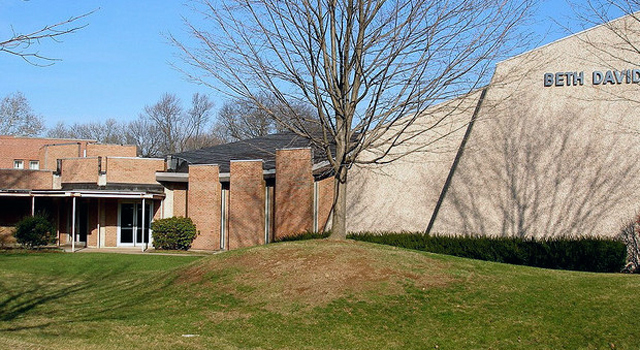
While some may grumble about the rules and restrictions, research suggests that all of these changes will be welcome. In a Pew Research Center survey of adults in the United States, 79 percent of Americans and 80 percent of Jews say that houses of worship should follow the same rules about social distancing as other organizations and businesses in their region. The survey also found while more than 60 percent of people who regularly attend religious services would feel confident about attending services, only about 12 percent had actually done so in the month preceding the mid-July survey.
“The response to these plans have been fantastic. We have had to close out a number of time options for the different services on different days. Plus, we continue to be contacted by others beyond our immediate community seeking in-person, COVID-19 responsible High Holiday options which we are happy and proud to provide for them,” says Brander.
Beth David’s announcement that it would be open for services also met with a positive response.
“When it was decided to open the sanctuary for the High Holidays, the response was exceedingly gratifying. Faster than we expected, we meet the maximum of 100 reservations for the indoor services. Clearly, the membership respects the efforts that have been made and they value the opportunities to pray together. The state limit for outdoors assemblage is 150, and we are prepared,” says Adler.
Knowing that not everyone is ready to come back inside to services, especially during the High Holidays when sanctuaries usually filled to capacity make social distancing almost impossible, many, synagogues in the Reform and Conservative movements will be hosting services online. Some congregations will be “broadcasting” the services led by their rabbis and cantors directly from their sanctuaries to give members a sense of comfort and camaraderie.
Given they don’t have the virtual option, most Orthodox synagogues are opening their doors to worshippers, while taking steps to ensure their well-being by sticking faithfully to state and CDC guidelines.
Beth David Synagogue, says Adler, “will open its sanctuary for the High Holidays for the first time since all synagogues ceased indoor worship in March.” And in an effort to be as inclusive as possible, outdoors and indoors services will be available on both Rosh Hashanah and Yom Kippur.”
The reason is two-fold.
“We are limited by the governor to a maximum of 100 attendees at any indoors services, and our membership exceeds that number” says Adler. In addition, he says, “Beth David has some members who are not yet comfortable to be indoors for worship. Therefore, there will be some outdoors services over the holidays.”
Beth David has taken many steps to make worship in the sanctuary as safe as possible: The building’s HVAC has been retrofitted with high efficiency filters (MERV 13) and the balance of fresh air and recycled air has been maximized to the highest allowable levels of fresh air; bathrooms have locks, limiting occupancy to one person, or parent and child, at a time; seats are assigned and follow social-distancing guidelines.
For those who can’t make it to shul, rabbis feel it’s incumbent on the community to make sure they are cared for. And many congregations are doing just that by ensuring that those individuals have a machzor (holiday prayer book), traditional holiday foods and are included in plans for shofar-blowing.
Beth El Temple, a Conservative congregation in West Hartford, for example, invited congregants to a Drive-Thru in the shul’s parking lot to pick up a pre-ordered, “Chagim to Go” tote, plus a loaned copy or two of the Machzor for High Holiday services.
At the Young Israel of West Hartford, says Brander, “We are coordinating numerous routes of shofar blowers as well as several shofar blowing points and ‘meet-ups’ across the community to ensure anyone who wants to hear shofar can without feeling the need to come to synagogue. We are happy to work this out for anyone. At the same time, we will be utilizing Zoom for parts of the service that do not require a quorum and can be said before the festivals — like for Kol Nidre.
Congregation Agudas Shalom, an Orthodox congregation in Stamford, is accommodating congregants who feel uncomfortable attending synagogue by offering a pre-Yom Kippur Virtual Yizkor Service on Sunday, Sept. 27. This is in addition to the Yizkor service that will be held at the synagogue on Yom Kippur itself.
“On every Yom Kippur, we recite and remember loved ones in our community who have passed away since the prior Yom Kippur” explains Rabbi Daniel Cohen, Agudas Shalom’s spiritual leader. “During the virtual service, we will be showing a brief video montage [entitled] ‘We Remember: Eternal Legacies,’ featuring photos and a sentence tribute to those who passed away within the past year.”
Despite their best efforts, this High Holiday season promises to be a very different experience for all Jews, regardless of denomination. But silver linings are everywhere.
“A debt of appreciation is owed to The Jewish Foundation of Greater Hartford for the support that has been forthcoming to assist synagogues at this very difficult time,” notes Adler. “More than most years, there is a sense that we are all ‘in this together.’ All synagogues are being forced out of comfort zones to be creative and responsive. I pray that Heaven sees all that this and other communities are doing to maintain the spirit and intent of this holy season. The inclusivity that is guiding all synagogues speaks loudly to the unity of our people. There is still much work to do; but already, there is much in which we can all take pride.”
Rabbi Brander agrees. Times may have changed, he says, but our goal and aspirations for the holidays remain the same.
“We hope to connect deeply and meaningfully to the prayers, mitzvot and moments of Rosh Hashanah, Aseret Yemi Teshuva [the 10 days of repentance between Rosh Hashanah and Yom Kippur], and Yom Kippur; we hope to connect with friends, family and connect to the Almighty; we hope to get the most out of these sacred moments of the Jewish calendar,” says Brander.
“All the more so this year, our mission remains unchanged — to create and foster a sacred space for spiritual growth, personal development and communal connection and inspiration,” he adds. “Together, we are confident that it will be just as meaningful and inspirational as it has been, in addition to being unique and new. Certainly, times are different and we will respond differently — but the essence remains the same. I think it is comforting that these times of great uncertainty, we have timeless truths that anchor us.
Judie Jacobson contributed to this article.
Shofar: A love song
By Deborah Fineblum
(JNS) As first-chair trumpet in the Orville Wright Junior High School band in Los Angeles in 1966, Robbie Weinger didn’t know it, but he was in training for his destiny: to become one of the world’s master shofar blowers.
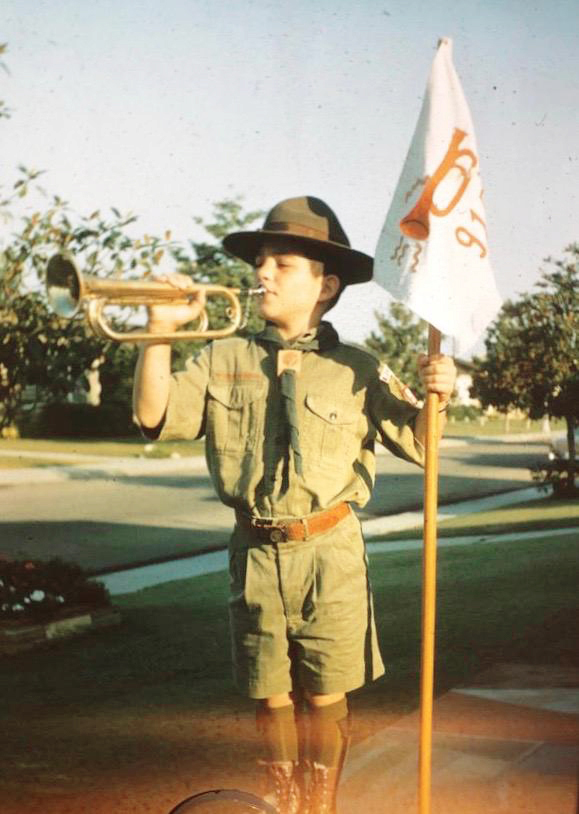
Weinger (who now goes by Robert) and other shofar-blowers have never been more sought-after as they are this year during the global coronavirus pandemic with so many synagogues either closed for business or accepting limited or outside seating for the High Holidays.
That’s why when Jews the world over are looking for someone to blow shofar for them, Weinger plans to be in Jerusalem, part of a team of shofar-sounders dividing up the city by neighborhood so that citizens can fulfill the commandment to hear the shofar blown on the Jewish New Year.
Weinger’s life has taken something of a leap. As a kid, he was not only a trumpeter but also a self-described “Hebrew-school rebel” who grew up to be a business executive and “a secular Jew to the core.”
And now? Not only is he known in Israel and beyond as “shofar man,” Weinger is one of the world’s tops blowers—a true baal tekiah who’s running a shofar center in the middle of the Judean Desert.
By 2008, Weinger was deeply in love with the ancient instrument and was in the shofar business full-time. By 2017, he had made aliyah.
Throughout this journey, the man will tell you that he was inspired by his father. After all, Jack Weinger was born just before Rosh Hashanah in 1917 and died exactly 100 years later on Rosh Hashanah 2017. His painting, “The Great Shofar,” is now the insignia of the shop his son runs 7,567 miles from his California birthplace. It didn’t take that son long to establish Shofar So Great in Beit Hogla, a tiny sand-blown speck on the map in the shadow of the ancient town of Jericho. It was here that the Israelites entered the land and, the priests blew the shofars and the people shouted, collapsing the city’s walls.
The shop is stocked with hundreds of shofars in every size and shape, fashioned from the horns of kudu, gemsbok, goat, and, of course, the traditional ram, many of them illustrated by Israeli artists. Visitors—be they families or groups—also get to hear Weinger share the history of the shofar or take workshops on the fine art of shofar blowing in the visitor’s center.
“Robert also tells the story of his spiritual search and how it landed him in this small eclectic community—what he’s doing here is attracting people to this somewhat hidden part of Israel,” says tour guide Shalom Pollack who often brings groups here. “The people here are pioneers taking a dusty piece of land and making the desert bloom like our ancestors did thousands of years ago.”
Of course, the pandemic has cooled off many, though not all, of the tours, and most of Weinger’s sales are conducted online these days. He also reports a decided uptick since the Jewish world woke up to the fact that opportunities to hear shofar in synagogues will be limited, and they might need to blow shofar themselves for their family, friends and neighbors this year.
‘A prophetic instrument’
On the Jewish New Year, Jews not only pray to be inscribed in the proverbial “Book of Life” for a happy and (this year in particular), healthy new year, but also coronate God as king all over again and resolve to make a fresh start in the new year.
And the shofar — which was first referenced in the Torah when God used it some 3,700 years ago to call the Israelites together to hear the Ten Commandments at the foot of Mount Sinai — is an integral part of all that.
As the sound pierces the listener to the core, it’s a cry of repentance on the day of judgment, hearkening back to the shofar used to call the Israelites to battle. Or, as Rabbi Yehuda Lave of Jerusalem puts it, “It’s also no coincidence that it’s on Rosh Hashanah that we read about the near-sacrifice of Isaac and the ram that was sacrificed in his place.”
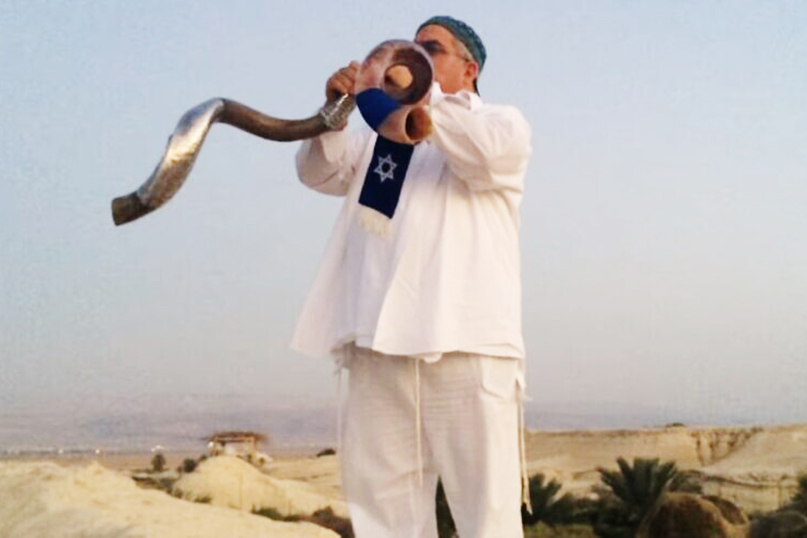
“The shofar is a prophetic instrument—hearing it awakens the power of Jewish history in every heart,” says Weinger. “It’s as if God speaks through it directly to His people and everyone who hears this sound—young and old, observant and secular—has an intense spiritual experience, of crying to God for mercy as opposed to judgment.”
“I’ve never heard anyone blow the shofar like Robert,” says Rabbi Hagi Ben Artzi who teaches at BarIlan University in Ramat Gan, as well as a woman’s seminary in Beit Hogla, where he first heard Weinger blow. “You can feel his shofar expressing something very deep, as if the sound comes from the bottom of his heart and spirit.”
In fact, Weinger has developed his own uses for the instrument. Five or six times a day, he hears from people around the world asking him to pray for them or a loved one in trouble. So he sounds the shofar, “petitioning God on their behalf, and God answers.”
‘Every neighborhood needs someone’
This year, given the COVID-19 pandemic, congregations everywhere are struggling to balance religious traditions and Torah-based mitzvot with government-mandated safety regulations. Meaning that on Rosh Hashanah, when the primary mitzvah is to hear the shofar, limited seating is likely to pass many shofar honors to smaller neighborhood minyanx.
For that reason, says Weinger, “Every neighborhood needs a shofar and someone who can blow the notes.”
Want to learn to blow shofar? Chabad is offering a free course. Visit chabad.org for more info.
Lifting voices for the High Holidays, even in COVID times
By Robert Goldblum
(JNS) Joey Weisenberg is a gentle, but passionate, who gives would-be High Holiday prayer leaders an intimate tour of the wordless melodies and ancient modes of the Jewish liturgical tradition. It’s nigunim and nusach for a new generation, and with the latest video technology. And it’s a place where, if you get it right, prayer and musicality meet, the goal being what Weisenberg calls “spiritual artistry.”
From a studio in a Philadelphia synagogue’s choir loft, outfitted in a billowy white shirt with a Nehru collar, Weisenberg is the picture of a hip ba’al tefillah, or prayer leader. His extensive library of master classes for those looking to lead High Holiday services, newly posted online, ranges far and wide. It moves from the bluesy feeling you get from a flatted seventh note to the emotional punch of a wordless Chassidic melody (nigun) to the beauty of Rosh Hashanah’s opening Amidah prayer to the majesty of the Ne’ilah service at the end of Yom Kippur “as the gates are closing,” he says.
Called the “High Holidays Training Initiative,” Weisenberg, a leader in the movement to re-energize congregational singing and spirituality, has filmed 128 episodes (most run six or seven minutes) that amount to a curated trip through the entire arc of High Holidays davening. Along the way, there is also instruction in the scales and modes that define what Weisenberg refers to as “Nusach Ashkenaz in America.”
A prayer leader will pick up hints about the “Freygish” and the “Ukrainian Dorian,” modal scales that give ancient chanting its distinctive musical flavor. If that prayer leader has an ear for jazz, he or she might find echoes of the modal jazz that defined the art form in its golden age in the 1950s and ’60s. Weisenberg himself is something of an improviser. “Nusach is heavily modal,” he says. “Most of the time when people are davening, there are a confined set of notes. But in the singing you’re sliding in between the notes. Once you know the sound of the mode, you can improvise within it.”
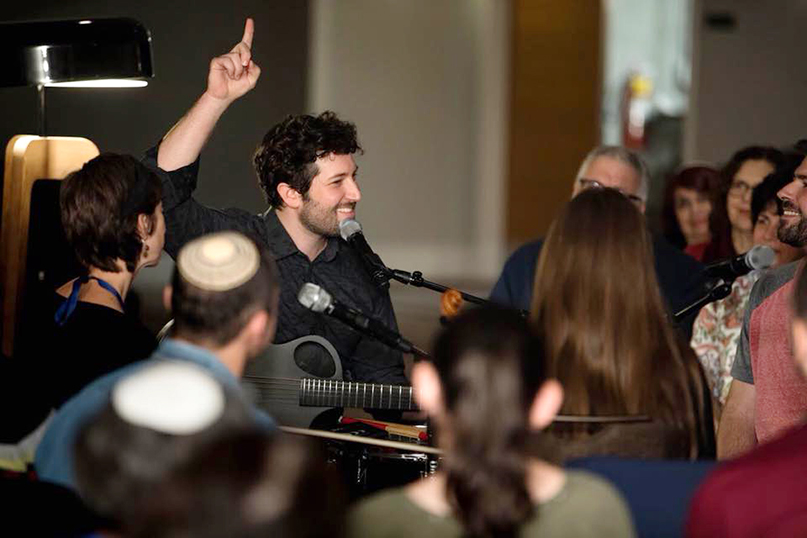
That tension between the fixed and the spontaneous—the dialogue between tradition, and the here and now—is central to Weisenberg’s musical and spiritual ethic. At 38, he’s an old soul, with a foot in the old world and one in the new. With a ready smile and wide Midwestern vowels courtesy of an upbringing in Milwaukee—where he soaked up the blues playing guitar and harmonica in the city’s clubs, and the soaring Chassidic chanting at Rabbi Michel Twerski’s renowned shul—Weisenberg is both a musician steeped in many strains of American music and a natural educator.
The COVID-19 crisis, of course, has cramped his style. Weisenberg is used to being smack in the middle of a circle of singers or on a tightly packed stage next to fellow musicians with fiddles and banjos and lap-steel guitars in the Hadar Ensemble. But, he sees a window opening.
Weisenberg had been getting a lot of calls from people asking for private lessons in prayer leading. He had a library of material he had created a year ago. And, given the coronavirus, he spotted an opportunity. “This is the perfect time to let people into the world of the ancient tradition for leading prayers and singing wordless melodies. If this terrible pandemic can open up a doorway for people to study and become empowered in their ability to lead song and Jewish prayer, that would be a great outcome from my perspective.”
The training-initiatives pilot launched in June; about 200 people are already taking part (it costs $18). “People are joining with very different sets of expectations,” says Weisenberg. There are some “established cantors” looking to learn a few new melodies. And there are people who have never led prayers and will be using the material as a crash course for their initial forays into prayer leading this High Holiday season.
Weisenberg says some of the people taking the master classes will be leading prayers online from their living rooms. Others might be leading small groups of worshippers in backyards. (He’ll be leading prayers online for the Kane Street Synagogue in Brooklyn, New York, where he was music director.) The pandemic, he says, represents “an unparalleled opportunity for people to lead davening. If people can clear away some of the chaotic busyness of their lives, there’s a chance to focus in on what they always wanted to learn.”
New compositions are the outpourings of the soul
“I feel committed to the old Jewish tradition, but as a musician, I have my ears open. My music draws from the depth of the Jewish tradition and the depths of the American tradition.”
Weisenberg’s 2017 book, The Torah of Music, earned a National Jewish Book Award. His work at the Kane Street Synagogue in Brooklyn put that congregation at the forefront of the neo-nigun movement, and as the founder and co-director of Hadar’s Philadelphia-based Rising Song Institute, he is credited with helping to reinvigorate synagogue singing.
“Joey is a unique talent: he has adapted traditional nusach and given it new meaning,” says Nancy Abramson, director of H.L. Miller Cantorial School and College of Jewish Music at the Jewish Theological Seminary. “His use of accessible music and the participation of all congregants during services continues a trend that began in the 1970s.”
The longstanding tradition of the musician-educator—the guide who passes along the Jewish musical wisdom of earlier generations to the new one—is close to Weisenberg’s heart. He learned to play harmonica at 11 from Jon Gindick’s “Country and Blues Harmonica for the Musically Hopeless.” And he devoured instructional videos from guitar masters like Nashville’s Brent Mason and the late jazz-blues virtuoso Danny Gatton.
“Those videos and instructional materials have been really important to me. They opened up a whole world of music for me. These virtuosos saw beyond their own expression and saw the importance of bringing more music into the world through their teaching. I’m following in that lineage.
“It’s not enough just to make music,” Weisenberg says, articulating his “rising song” vision. “You have to make everyone make music.”








 Southern New England Jewish Ledger
Southern New England Jewish Ledger

